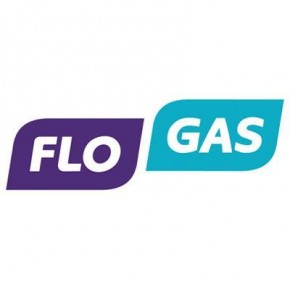
The benefits of shale and biomethane: what does the future hold? A Flogas article
The following article comes courtesy of Flogas, a UK provider of LPG storage tanks.
“FEW people can make accurate predictions regarding the energy sources we will use in the UK to fuel our homes and businesses. However, at the 2017 Future Energy Scenarios event, the efficiency and future use of shale gas and biomethane were discussed, which has made some in the industry think about their abilities to provide alternative options to other fossil fuels.
Here, we analyse the advances of shale and biomethane — and whether these could be the sources-of-choice for the UK in years to come?
How could biomethane gas solve the UK’s green energy problems?
There’s a national drive to be greener and eco-friendlier in the UK, which is where biomethane comes in handy. This is because, with this form of energy, the gas occurs naturally from the anaerobic digestion of organic matter, which can be sourced from manure, organic waste, sewage and both dead animal and plant matter.
Biomethane is also a sustainable method of sourcing gas that means those in the industry will not need to rely on extracting natural gas from the ground, as the two are the same type of gas.
So, have there been any victories for this type of energy supply in the UK that would help to advocate its use? Apparently, so. For instance, Severn Trent Water was successful in opening a facility at its Minworth Sewage Treatment Works in 2014, whereby biogas from the anaerobic digestion process is converted so that it can be used within the domestic gas supply.
The facility was the largest gas-to-grid plant found in the UK at the time of its opening, with 1,200 cubic metres of biogas able to be converted into 750 cubic metres of biomethane each hour. This biomethane can then be injected into the National Gas Grid.
Biomethane sounds good, but the question remains for many: how does it work? Explaining the setup of the Minworth Sewage Treatment Works gas-to-grid plant, Severn Trent Water’s renewable energy development manager said:
“As part of the sewage treatment process, sewage sludge is produced. At Minworth we feed this to our 16 anaerobic digesters, or ‘concrete cows’, which work like giant cow’s stomachs to digest the waste material to produce energy in the form of gas.
“Currently, we use 40 per cent of this energy to make electricity, but more can be done – that’s where this new process comes in. With treatment, gas from sewage is made clean enough and at the right consistency to be injected into the gas supply network to power homes in the area. It’s local gas produced from local people.”
There have even been instances where biomethane has been adopted as an energy source for big name brands. For example, around a year after the launch of the Minworth Sewage Treatment Works gas-to-grid facility, popular chain, Sainsbury’s, made its Cannock superstore the first to be powered entirely by the food waste created by the retailer. Before 2015, Sainsbury’s held the principles:
Any other unsold food will be turned into animal feed.
Any unsold food which was still suitable for human consumption will be given to charities. Any surplus unsold food will be delivered to Biffa’s advanced anaerobic digestion facility, located in Cannock. When food is delivered to Biffa’s facility, it is broken down to create biomethane gas. This gas is then used to generate electricity.
However, it soon became apparent that Biffa and Sainsbury’s could take advantage of the Cannock superstore’s closeness to the advanced anaerobic digestion facility. As a result, the two companies created and installed a 1.5km cable between the pair of buildings so that the plant can provide a direct supply of renewable electricity to the superstore.
But how much did it cost to set this up and was it worth it for both facilities? £280,000 of investment was put towards the project — which covered the setup of power cables, switch gears and the covering of all legal fees — and Sainsbury’s estimated that it had the potential to save in the region of £140,000 in just one year due to relying less on the National Grid for day-to-day power supplies.
In the future, could we see more household names adopt biomethane to deliver energy to its buildings?
Could shale gas and fracking get the green light
To say fracking is a contentious issue is an understatement — but what are the arguments for and against? On one side, the UK government has argued that shale gas stands to deliver the nation with increased energy security, growth and jobs.
However, there is a counter argument that the method for extracting shale gas — which involves water being injected into ‘shale’ rock formations at a high pressure to extract gas — runs the risk of having a ruinous impact on the environment. The process is also very expensive.
Other criticisms of fracking include how it lengthens the UK’s use of fossil fuels, increases the risk of water being polluted and is apparently connected to tremors and even earthquakes. Steve Mason, of cross-party pressure group Frack Free United, commented:
“This Tory government is backing fracking and forging on with a ludicrous dirty energy policy. It is time for them to wake up and listen to their own reports, the voice of the public in areas under threat and halt all fracking activity now.”
But, are there any examples of successful fracking? Once, the US imported large amounts of oil and gas to fuel the country, but that all changed when it discovered the effectiveness of extracting shale gas. Now, the nation is self-sufficient and even exporting gas to other nations.
Unfortunately, the UK, which imports over 50 per cent of the gas it needs from overseas, is struggling with a similar situation to the one the US once had. However, a report by the British Geology Society published in 2012 suggested that there is a resource estimate of around 1,327 trillion cubic feet of gas found throughout the UK. Ineos’ CEO, Jim Ratcliffe (whose company has licences to frack in the UK in an area measuring one million acres) also said to The Guardian: “The future for manufacturing in the UK will look quite gloomy if we don’t exploit shale. I can’t see otherwise what is going to arrest the decline in British manufacturing.”
Latest news

18th April 2024
Abloy UK showcases new digital portfolio at The Security Event 2024
Abloy UK is set to unveil its latest line-up of access control systems at The Security Event 2024, welcoming guests to explore its cutting-edge electromechanical and digital solutions on stand 5/F50.
Posted in Access Control & Door Entry Systems, Architectural Ironmongery, Articles, Building Industry Events, Building Industry News, Building Products & Structures, Building Services, Doors, Exhibitions and Conferences, Facility Management & Building Services, Health & Safety, Information Technology, Retrofit & Renovation, Security and Fire Protection
18th April 2024
Strand is a Failsafe Choice for Emergency Exit and Panic Hardware
In times of emergency, you’re in safe hands with Strand Hardware. Although there are many considerations for building specification, few decisions can be as critical as selecting the right emergency exit/panic hardware.
Posted in Access Control & Door Entry Systems, Architectural Ironmongery, Articles, Building Industry News, Building Products & Structures, Building Services, Doors, Facility Management & Building Services, Health & Safety, Restoration & Refurbishment, Retrofit & Renovation, Security and Fire Protection
18th April 2024
MRA appoints Callum Budd as Research Projects Director
MRA Research, the research agency focused solely on the construction sector, welcomes Callum Budd as its new Research Projects Director.
Posted in Articles, Building Industry News, Information Technology, news, Recruitment, Research & Materials Testing
16th April 2024
Mitsubishi Electric set to host CIBSE Journal webinar
Mitsubishi Electric will host a CIBSE Journal webinar on Wednesday 24th April 2024 at 1pm to discuss the legislation and initiatives driving changes in the way we will need to heat, cool and ventilate large commercial buildings to reach net zero emissions in the UK.
Posted in Air Conditioning, Articles, Building Industry Events, Building Industry News, Building Products & Structures, Building Regulations & Accreditations, Building Services, Facility Management & Building Services, Heating Systems, Controls and Management, Heating, Ventilation and Air Conditioning - HVAC, Information Technology, Pipes & Fittings, Plumbing, Seminars, Sustainability & Energy Efficiency, Training
 Sign up:
Sign up: